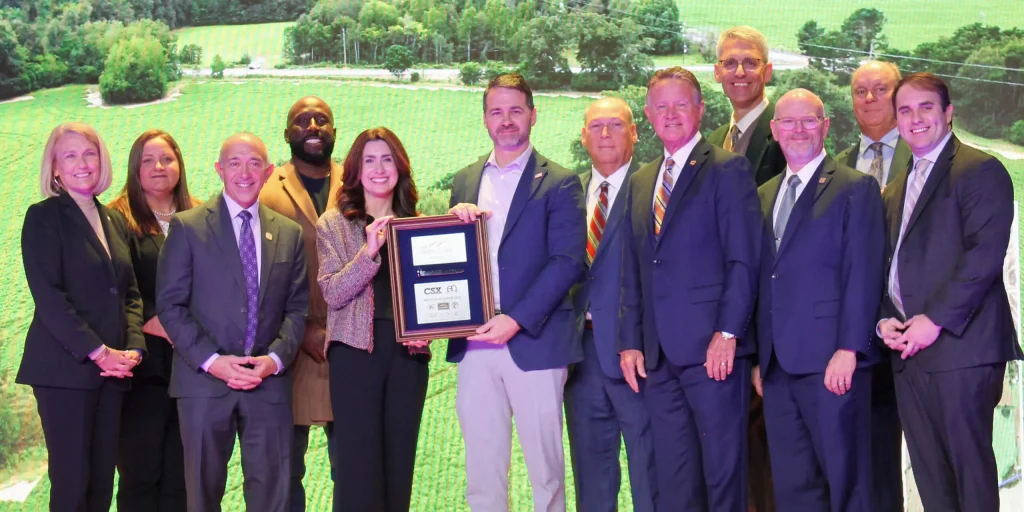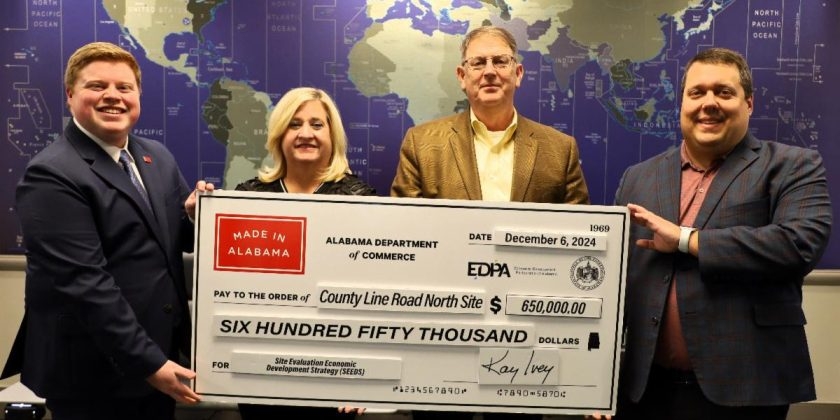Alabama’s economic development successes in the years to come may be due in large part to up to $40 million in SEEDS sewn this year.
The State Industrial Development Authority (SIDA) is considering 34 properties throughout the state under the new Site Evaluation and Economic Development Strategy (SEEDS) Act – part of the Game Plan economic development legislation approved last year.

(State Industrial Development Authority)
SIDA has tapped Global Location Strategies (GLS) out of Greenville, South Carolina, to assist in the evaluation process.
The 34 properties consist of 16 being considered for SEEDS site assessment dollars and 18 for SEEDS site development dollars. A pool of $40 million in grants is available with $42 million in requests from applicants, so not all will be approved.
SIDA’s team has chosen 19 of the sites for its initial evaluation in an attempt to maximize the potential for the initial $40 million in grants. The sites are being evaluated for projects that would be capital- or labor-intensive or a blend of both.
The team is making field site visits, doing site-selection simulations for the three types of projects, and comparing the sites against locations in three other states that are regularly competing against Alabama. The team is also conducting site improvement impact analyses and prioritizing improvement recommendations.
“The communities that applied for SEEDS funding have delivered some promising new and existing industrial sites for GLS to evaluate,” said Shane Kearney, director of Economic and Community Development at Alabama Power and part of the evaluation team. “The industrial product developed by the SEEDS Act will soon be available to market to prospective companies – making the state much more competitive for economic development projects.”
SEEDS was a hot topic at last month’s Economic Development Association of Alabama (EDAA) 2024 Winter Conference.
Greg Barker, president of the Economic Development Partnership of Alabama, said there were 42 applications submitted for SEEDS dollars during the first-ever application window last year. The 42 have since been whittled down to 34.
“It’s clear to everybody that the demand is there,” Barker said.
A panel discussion devoted to the SEEDS program at the EDAA conference included Cedric Colbert, a GLS consultant working on the Alabama site evaluations.
Colbert told Alabama News Center that the 19 sites the SIDA team has chosen for initial evaluation are spread across the state.
“We are visiting sites in rural Alabama as well as in the Birmingham and Mobile and Huntsville areas – really a good distribution between rural and urban areas across the state,” he said.
A SEEDS project carries a tiered matching requirement based on location.
Colbert said Alabama is like other states that need more economic development-ready sites for industrial prospects. Alabama is also not alone in devoting dollars to prepare more properties.
“Over the past two to three years, we have seen a sharp increase in states around the country passing legislation to prioritize site development and site readiness efforts, so we applaud Alabama for following suit and doing that also with the SEEDS program,” Colbert said.
Alabama’s $40 million is greater than the state allocation for site assessment and development in North Carolina ($10 million), Mississippi and Tennessee ($20 million each) but not as much as Virginia ($90 million), Kentucky and New York ($200 million each) or Ohio ($750 million).
States including Alabama also have other public and private site development grants and programs available. For instance, the Growing Alabama tax credit allows private dollars to be used for public site improvements for economic development purposes.
Barker said it’s possible that a site submitted for SEEDS assessment now could be submitted for SEEDS development dollars later, if more dollars are allocated for the program. After initial development, that same site could receive Growing Alabama investment to be prepared for marketing to prospects.
“Think of (SEEDS) as more speculative property development trying to get ready, and then Growing Alabama is utilized – think of it as to finish the development of sites and win projects,” he said. “That’s kind of how things have evolved and are working.”
Barker said SEEDS is already showing signs of success before any of the $40 million has been allocated.
“This program has worked exactly as we hoped it would,” Barker said. “There has been one property that was submitted that’s a little over 400 acres that, without it being submitted for SEEDS, no one would have been aware of it. One of the (Department of) Commerce project managers put that 400-acre site into an RFP (request for proposal) and a prospect is coming to look at that 400 acres next week.”
Colbert said that’s an example of why communities should always be assessing what they have when it comes to potential industrial sites.
“This is helpful for communities to be able to see what land in their communities might be good as an industrial site and then, once they have identified those parcels that can be good for industrial use, what improvements need to be made to make those sites more competitive to have them be viewed favorably by site selection decision-makers like consultants or corporate users themselves,” he said.
It’s also a sign that the program could be worth renewing, Colbert said.
“We hope that Alabama will decide to renew this program for next year and maybe allocate additional funding for it,” he said. “Regardless of whether or not that happens, there are other programs out there, like Growing Alabama, and so we encourage communities to always know what sites they have available, maybe where their deficiencies are, and what investments they strategically would want to make in order to make them more attractive.”













